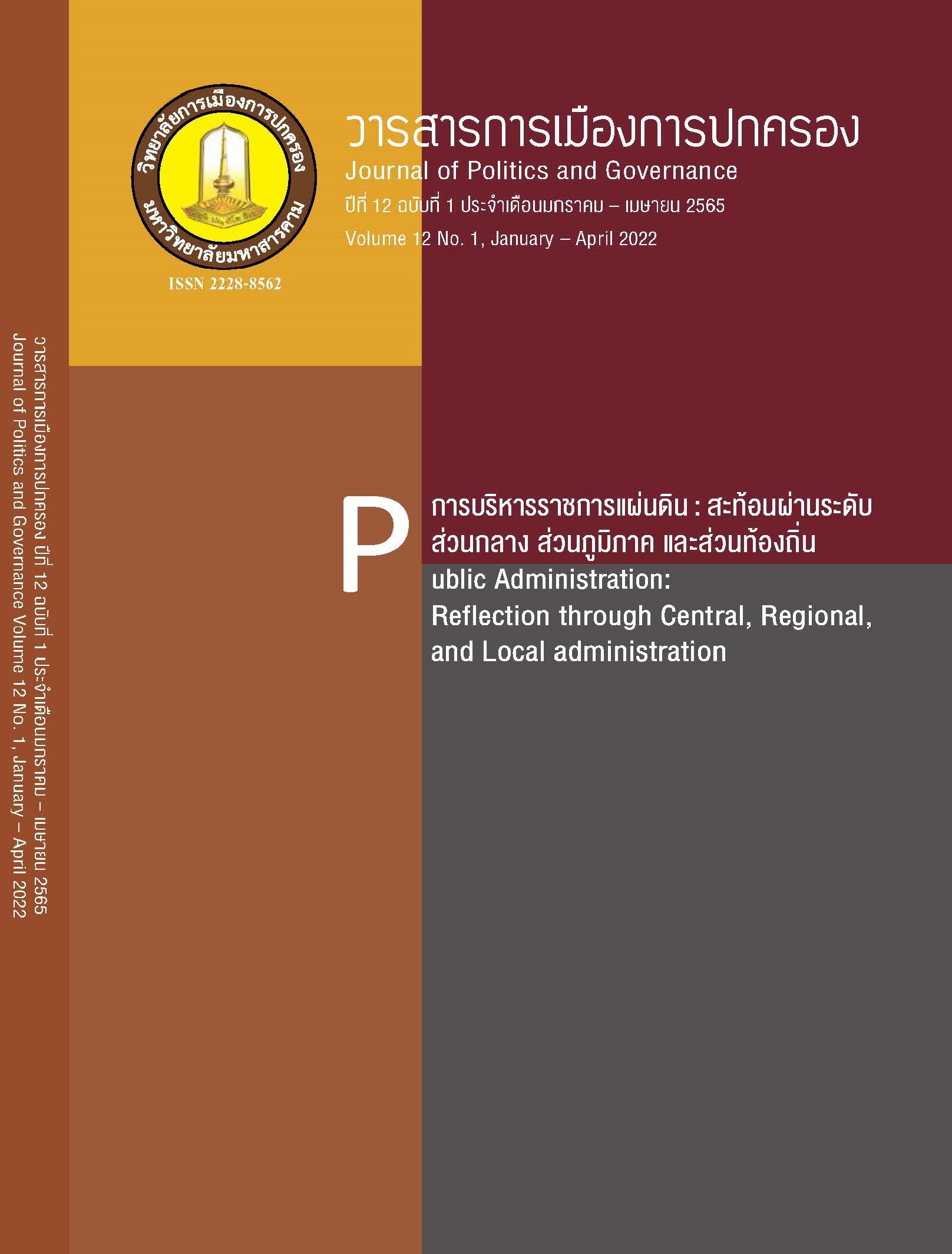The Study and Preparation for Public Organization of the Department of Science Service
Main Article Content
Abstract
This research aimed to study and prepare the Department of Science Service to be listed as a public organization. The main objective is to study and analyze status of process and direction of the Department with special reference to National Quality Infrastructure (NQI) in order to prepare a strategic and business plan, financial plan and set up plan. These will be incorporated as a transition for the Department to become a public organization according to the guideline introduced by the Office of the Public Sector Development Commission. The study used mixed methodology which combined both qualitative and quantitative research methods. As for qualitative research techniques; documentary research, in-depth interview, focus group, policy meeting and public forum were employed to collect data. While a structured survey questionnaire was mainly used to collect quantitative data. Key informants for qualitative data were selected using purposive sampling technique which were classified into three groups altogether 193 samples in total. For questionnaire survey, quantitative data were collected from 470 employees at the Department of Science Service, which is 80 percent of total number of employees. The qualitative data were content analyzed while quantitative data were analyzed using descriptive statistics. This study revealed that 1) in the analysis of the organization’s environment it was found that the organization has strengths with resources and expertise in carrying out its missions with international standards and is recognized by the society while problems in operating procedures and administration according to organizational culture in the bureaucratic system causing weaknesses to create service efficiency. It was also found the weakness in mechanisms and systems to support the mission that can also be developed and modified to achieve operational potential.
For external environment, there are many opportunities contributing to the development of the Department of Science Service, especially the preparation for the transformation into a public organization, such as factors that contribute to the government policy the direction of development of the country. 2) Strategic Planning business plans, operations of public organizations, financial plans, and plans for establishment and transfer for proposing to establish a public organization according to the guidelines of the Office of the Public Sector Development Commission (OPDC) under the strategic plan of Science Service Institute, 2017-2023 and the business plan of the organization (four-year operation plan). The vision premises that the Department of Science Service is a leading international scientific audit and certification organization with four strategic issues as follows: 1) To elevate the quality infrastructure to develop the country’s competitiveness, 2) to integrate cooperation in knowledge, technology and innovation both domestically and internationally in driving up the standard and advancing the quality in the changing world, 3) to enhance the administration of big data to support driving the country’s development in science services, and 4) to develop an administrative system to become a sustainable high-performance organization with a good setup of financial plan and transition plan that covers dimension for organizational structure and workforce. The findings informed the rate of manpower that can support the new management style of public organizations and the transfer of assets and liabilities from the old state administration to the new form of continuous management.
Article Details
References
สถาบันเพิ่มผลผลิตแห่งชาติ. (2559). การประเมินอัตรากำลัง : นำองค์การให้พร้อมรับมือการเปลี่ยนแปลง. งานสัมมนาหัวข้อ “บริหารจัดการคนและองค์การ แบบ Right Size Right Time Right Skill ขับเคลื่อนองค์การไทยสู่ 4.0”. วันพุธที่ 23 พฤศจิกายน 2559 ณ ห้องศรีสุริยวงศ์ โรงแรมตวันนา.
สุรพล นิติไกรพจน์. (2542). องค์การมหาชน แนวคิด รูปแบบและวิธีการบริหารงาน. กรุงเทพมหานคร: สำนักงานคณะกรรมการปฏิรูประบบราชการ สำนักงาน ก.พ.
เอกวิทย์ มณีธร. (2551). ระบบราชการ รัฐวิสาหกิจและองค์การมหาชนของไทย. กรุงเทพมหานคร: เวิลด์เทรด ประเทศไทย.
Koen V. & Jan W. (2016). Why Do Autonomous Public Agencies Use Performance Management Techniques? Revisiting the Role of Basic Organizational Characteristics. International Public Management Journal, 21(4), 619-649.
Martijn L.P. Groenleer. (2014). Agency Autonomy Actually: Managerial Strategies, Legitimacy, and the Early Development of the European Union’s Agencies for Drug and Food Safety Regulation. International Public Management Journal, 17(2), 255-292.
Paolo F., Davide G. & Edoardo O. (2007). Disaggregation, Autonomy and Re-regulation, Contractualism. Public Management Review, 9(4), 557-585.
Silvia T., Sandro B. & Alessandro G. (2010). Is There a risk of Incoherence in an Autonomous Public Agency?. International Journal of public Administration, 33(11), 521-528.


